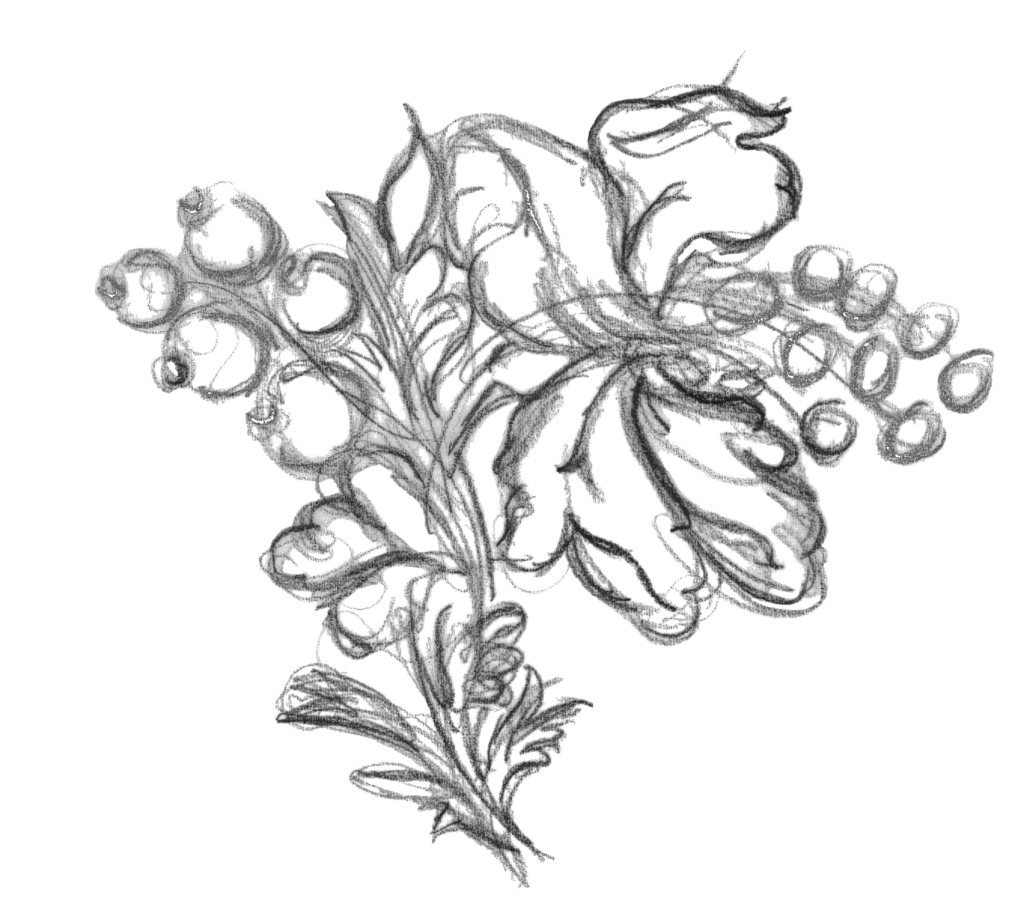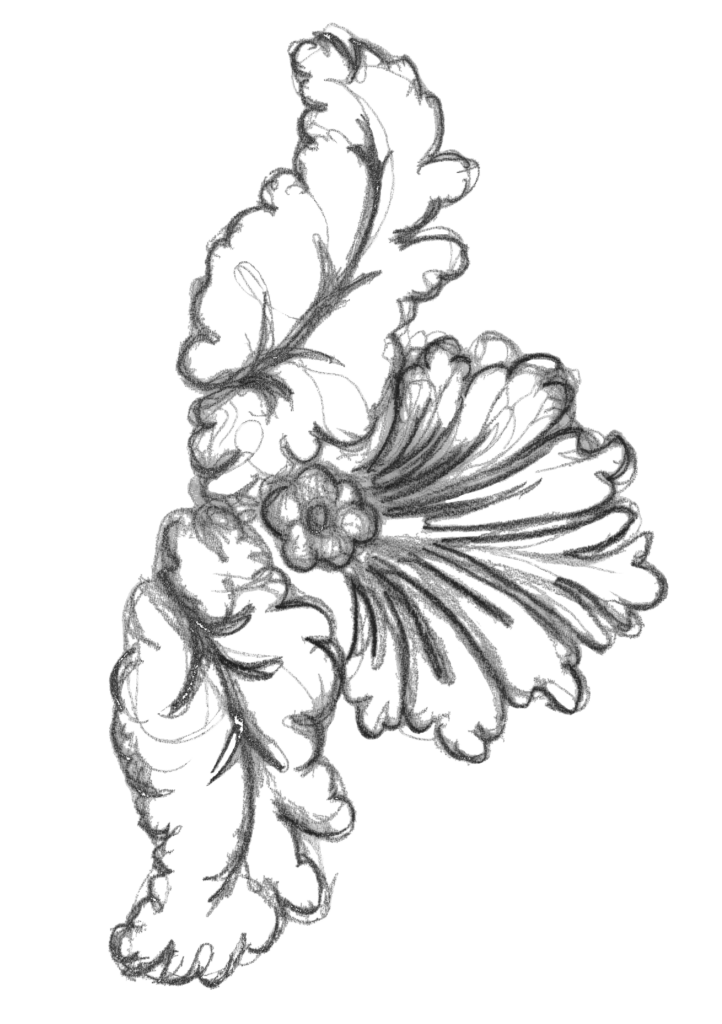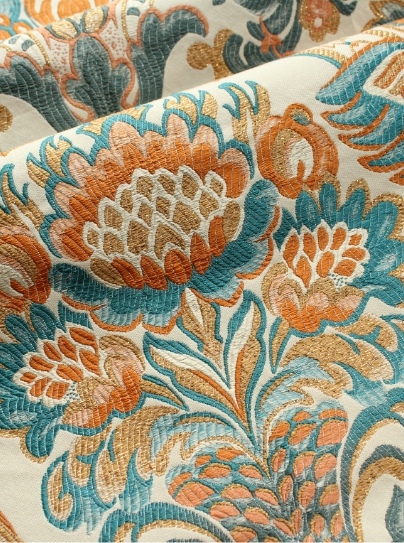Historic Textiles for the MET
Humphries Weaving has a long-established relationship with this museum and has worked with them on more than twelve projects since Humphries inception in 1972.
As part of Humphries textile consultancy services we worked with the Metropolitan Museum of Art to restore this bed using pure silk damask.
The highly influential and venerable institution of the Metropolitan Museum of Art in New York, known worldwide as the MET, is celebrating its 150th year anniversary this year. The Metropolitan Museum of Art presents over 5,000 years of art from around the world for everyone to experience and enjoy. Since its founding in 1870, The Met has always aspired to be more than a treasury of rare and beautiful objects. Its purpose has always been to establish and maintain a Museum and library of art, encouraging and developing the study of the fine arts, and the application of arts to manufacture and practical life. Study, conservation and preservation are key aspects of this role, employing many specialists within their particular field. Their collection of historic textiles includes many woven in England.
The silk weaving industry, established in England in the 17th century was originally based around Spitalfields, Bow and Bethnal Green in London. In the early 19th century many workers and masters were forced to move away from this area to avoid heavy taxation imposed on them by the city. Locating themselves outside the geographical boundary but maintaining access to London for trade, the weavers settled in towns such as Braintree, Halstead and Sudbury, on the Essex and Suffolk border. Hence creating a hub of excellence of silk fabric woven in East Anglia.
Humphries Weaving established itself in the early 1970’s in Sudbury, where it still weaves today. It has become one of the preeminent British fabric manufactures and specializes in recreating historically accurate fabrics for restorations. Museums throughout the world work closely with our team to create truly authentic fabrics. Many of these projects require the company to offer their textile consultancy services to carry out in depth textile research.
One of the first projects that the MET asked Humphries Weaving to work on with them, was in 1983 and was a Crimson silk/cotton (half silk) damask for Period Room Sets in the museum. Our Ovingnton Damask was woven using custom dyed warps and wefts. As is often the case, we were only supplied with a rotted collection of threads and crimson fibre dust to match to. The resulting opulent fabric is shown here below.
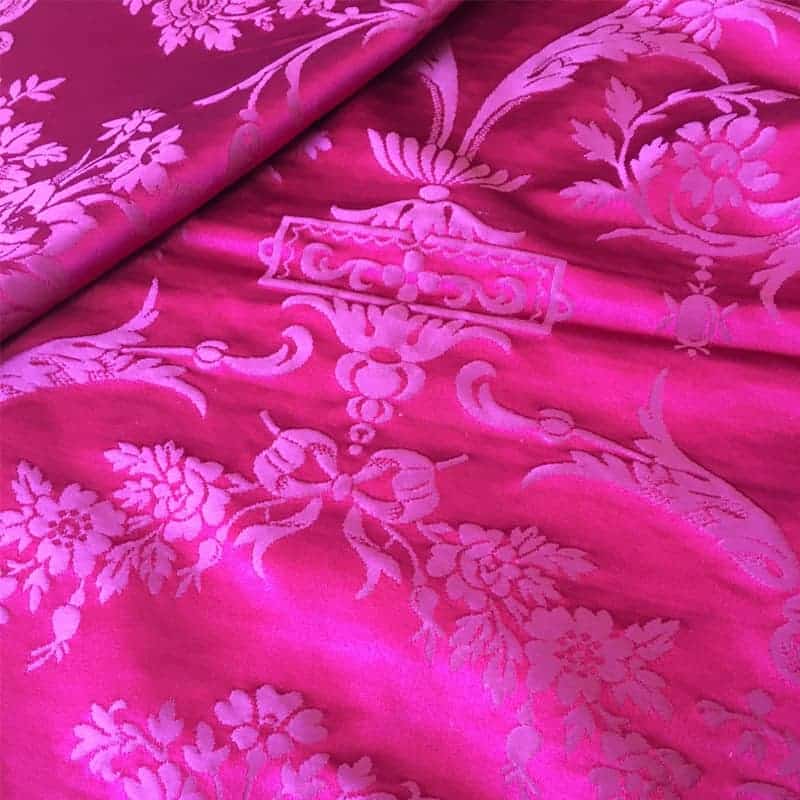
Humphries Weaving Ovington Half Silk Damask
One of the next and highly important collaborations was for the Frederick Denning Library. This library, designed by Frederick Clark Withers (born in Shepton Mallet, Somerset, England in 1828), was built for Denning, the then president of the Union Bank of New York. The library was constructed in Balmville, a hamlet in Orange County, New York. The Silk/Wool Pentlow Damask used in the curtains and its accompanying border design are both attributed to Augustus Pugin (born in Bloomsbury, London, England in 1812). The rich brown, gold and cobalt yarns are historically appropriate for the time. The first samples for this project were woven in the mid 1980’s and it was completed in 1995.
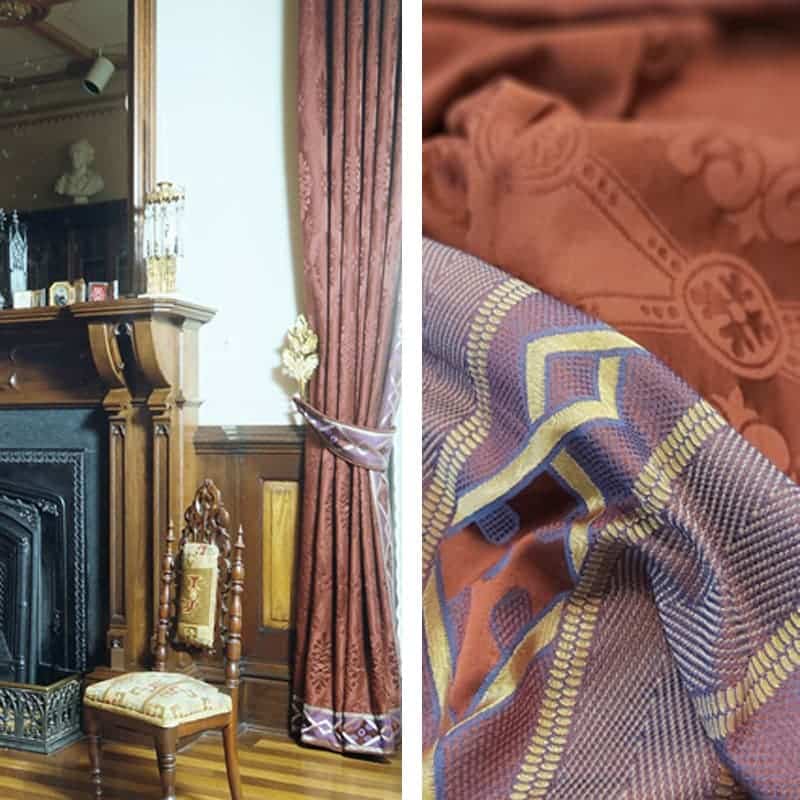
The Gothic Library designed by Frederick Clark Withers featuring curtains utilizing Humphries Pentlow Damask and Border fabrics in silk and wool
Lord Coningsby’s state bed is wonderfully preserved and now resides in the museums recently reopened British Gallery. The bed, in the style of Daniel Marot, was made in circa 1698 and was built for Lord Coningsby’s Hampton Court Estate in Herefordshire, England. The estate dates from 1427 by Sir Rowland Lenthall. The land was granted to him on his marriage to the king’s cousin. Margaet Fitzalan, daughter of the Earl of Arundal. The bed left England in 1925 and was owned by Mr. and Mrs. William Randolph Hearst until 1968 when it was acquired by the MET. A full restoration of the bed was carried out in 1995 and the silk fabric was woven on a jaspe dip dyed warp in what is described as a “dirty blue” to imitate the best-preserved colours of the fabric that were being retained during the restoration.
Melinda Watt, the then assistant curator at the MET, over saw the project that used our textile consultancy services to recreate the bed hangings for the Georges Jacob bed in the museums Wrightsman Galleries. George Jacob was one of France’s most eminent Menuisiers and he created this bed in 1782. In 1791 the bed is documented as standing in the large bedchamber of Guyonne-Marguerite de Durfort de Lorge, duchesse de Choiseul-Praslin (1737–1806), at her Parisian home, the Hôtel de Belle Isle. Following the turmoil of the Revolution and the political changes of the early nineteenth century, the bed was sold in Paris in 1830. It became part of the famous collections at Hamilton Palace, South Lanarkshire, Scotland, the residence of Alexander Hamilton Douglas, tenth Duke of Hamilton (1767–1852), where it was placed in one of the state rooms. The duke’s grandson sold the contents of the palace, including the bed, at a highly anticipated auction that took place in 1882. Through the intermediation of several dealers, the bed was acquired in 1897 by the financier and railroad executive George J. Gould (1864–1923). His wife, the former actress Edith M. Kingdon (1864–1921), used it in her bedroom of their New York.
The original hangings for this bed were unusually created in 1783 with a tapestry fabric. This can now only be seen on the inside of the dome. It was decided, during the restoration of this bed, to replace the “winter” tapestry with “summer” hangings in 100% silk. This fabric was woven by Humphries on a strie warp and was colour matched to a document received from the museum. The warp was developed using two shades of blue and the lay out and colour was trialled in a number of patterns and shades until we had an exact match. Our Romney design, an authentic 18th century damask, was used for this project and over a 100m of custom jacquard weaving was required.to dress this unique bed. Notice the strie warp shown in the close-up detail on the right.
The Hart Room is the earliest period room in the American Wing of the MET. Its architectural elements are typical of seventeenth-century New England interiors, and the furnishings are fine examples of late-seventeenth-century Massachusetts-made furniture, a melding of late Renaissance and Mannerist designs from northern Europe and England and craft practices brought to the colonies by English joiners and turners.
The room is from the home of Samuel (1645-1725) and Sarah Norton (1647-1727) Hart of Ipswich, Massachusetts. A first-generation New Englander. The fabric used to recreate this room is typical of the time and Humphries Weaving created a Tomato Camlet in pure worsted wool. This can be seen used for the bed drapes and other pieces of this set. This is typical Norwich Stuff.
Humphries have worked on a number of other projects with the MET, advising through our textile consultancy services and supplying custom fabric weaving for both their own rooms and rooms in other museums where they have been asked to use their knowledge and expertise for historical accuracy. We have worked on many of these with Nancy Britain, the museums Upholstery Conservator.
Humphries have remained open throughout the current pandemic, despite a short break from weaving whilst systems were developed to allow weavers to work safely. Unfortunately, the Metropolitan Museum of New York have had to close to the public. However, their intention is to reopen on the 29th of August 2020. We wish them well in their anniversary year and we all look forward to seeing their beautiful works of art once more.
For more information visit; www.humphriesweaving.co.uk
If you would like to read related articles to this article please follow these links:
The Great Beds of Humphries – Part Two
You can also keep up to date with many of our projects by following our Instagram page: @humhriesweaving. if you have a project which requires our textile consultancy services please get in contact with a member of our specialist team.
